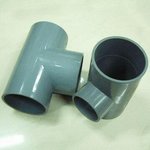| #
|
Week of...
|
Links
|
| 1
|
Sep 11
|
About, Tue, Thu
|
| 2
|
Sep 18
|
Tue, Kurlin(P), Thu
|
| 3
|
Sep 25
|
Tue, Photo, Thu
|
| 4
|
Oct 2
|
HW1, Tue, Thu
|
| 5
|
Oct 9
|
Tue(P), Thu(P)
|
| 6
|
Oct 16
|
HW2, Tue(P), Thu(P)
|
| 7
|
Oct 23
|
Tue(P), Thu
|
| 8
|
Oct 30
|
HW3, Tue, Thu
|
| 9
|
Nov 6
|
Tue ( ), Thu ), Thu
|
| 10
|
Nov 13
|
Tue, Thu
|
| 11
|
Nov 20
|
HW4(P), Thu
|
| 12
|
Nov 27
|
Thu
|
| 13
|
Dec 4
|
Syzygies in Asymptote, Final
|
|
|
Jan 8
|
Grades
|
| Note. (P) means "contains a problem that Dror cares about".
|

Add your name / see who's in!
|
| On to 07-1352
|
|
Question 1. Can you embed a trinion (a.k.a. a sphere with three holes, a pair of pants, or a band theta graph) in  so that each boundary component would be unknotted yet each pair of boundary components would be knotted? How about, so that at least one pair of boundary components would be knotted?
so that each boundary component would be unknotted yet each pair of boundary components would be knotted? How about, so that at least one pair of boundary components would be knotted?
Question 2. Suppose two trinions  and
and  are knotted so that the pushforwards
are knotted so that the pushforwards  and
and  are equal for any link
are equal for any link  which is "drawn" on the parameter space
which is "drawn" on the parameter space  of
of  and
and  . Does it follow that
. Does it follow that  and
and  are equivalent?
are equivalent?
Question 3. A trinion  is embedded in
is embedded in  so that its boundary is the trivial 3-component link. Does it follow that
so that its boundary is the trivial 3-component link. Does it follow that  is trivial?
is trivial?
Question 4. A trinion  is embedded in
is embedded in  so that its "strapped boundary" is equivalent to the strapped boundary of the trivially embedded trinion. Does it follow that
so that its "strapped boundary" is equivalent to the strapped boundary of the trivially embedded trinion. Does it follow that  is trivial?
is trivial?

The standardly embedded strapped trinion











